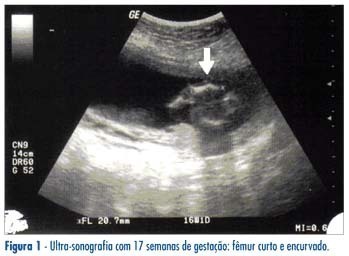Summary
Revista Brasileira de Ginecologia e Obstetrícia. 2009;31(6):285-292
DOI 10.1590/S0100-72032009000600004
PURPOSE: to investigate the main factors associated with fetal death in the city of Recife, Pernambuco, Brazil. METHODS: an observational, case-control study, including cases attended from June 1st 2004 to 31st March 2005. A number of 116 stillbirth cases and 472 live birth controls, with deliveries assisted at the service, were included. The cases were identified in the record book from the delivery room. The puerperium women were identified by the name and register number at a puerperium infirmary. The controls were selected, using the puerperium infirmary neighborhood criterion, identifying the beds with numbers immediately lower (two patients) and higher (two patients) than the patient's, as far as they had delivered live babies. In case they did not agree to participate in the research, the next beds with numbers consecutively lower or higher were approached. The χ2 association and Fisher's exact tests were used when necessary to test the association between the independent (predictive) and dependent (stillborn) variables, considering 5% as the significance level. To determine the association strength, the estimate of relative risk for case-control cases, Odds Ratio (OR) was used, with 95% as the confidence interval (CI). Logistic regression analysis according to the hierarchy model was done to control confounding factors. RESULTS: the fetal mortality rate corresponded to 24.4 by 1,000 births. After the multivariate analysis, the variables which kept significantly associated with fetal death were: malformation (OR=7.5; CI=3.2-17.4), number of pre-natal appointments lower than six (OR=4.4; CI=2.5-7.5), hemorrhagic syndromes (OR=2.9; CI=1.4-5.7), attendance in another hospital unit along the 24 hours which preceded the patient's admission in the institution (OR=2.9; CI=1.8-4.6), mothers' age over or equal to 35 years old (OR=2.2; CI=1.0-4.9) and schooling lower than eight years (OR=1.6; CI=1.02-2.6). CONCLUSIONS: it was found a high fetal mortality coefficient, the main factors associated with death were: malformation, number of pre-natal appointments lower than six, hemorrhagic syndromes, history of attendance previous to the hospital admission, mothers' age over or equal to 35 and schooling lower than eight years.
Summary
Revista Brasileira de Ginecologia e Obstetrícia. 2009;31(4):164-170
DOI 10.1590/S0100-72032009000400002
PURPOSE: to determine factors associated to amniotic fluid volume and frequencies of fetal anomalies, in a reference center in Pernambuco. METHODS: a transversal study performed in high-risk pregnant women submitted to obstetrical morphological ultrasound, from March 2002 to March 2006, at an institution from Recife, Pernambuco, Brasil. The intrauterine diagnosis was confirmed after birth. Sociodemographic and obstetrical characteristics, amniotic liquid volume and presence of fetal anomalies were the variables studied. Fisher's exact, χ2, and Student's t tests, at a significance level of 5% were applied to verify the correlation among the variables. Prevalence rate and confidence interval at 95% were calculated. Multiple logistic regression analysis was performed at a significance level of 5%. RESULTS: Two hundred and fifty-seven pregnant women (56.2%) with congenital anomalies and 200 (43.8%) without anomalies, confirmed in the postnatal, were included in the study. The average of maternal ages and gestation periods were 24.8±6.5 years and 35.9±3.7 weeks, respectively. The fetal anomalies were discovered in the central nervous system (50.6%) and genitourinary tract (23.0%). The presence of congenital anomalies were significantly linked with reduced liquid/oligohydramnios (p=0.0002) and increased liquid/polyhydramnios (p<0.0001). Intrauterine mortality was more frequent in the group with anomalies, as compared to the healthy fetuses (10.5 versus 2.5%; p<0.01). CONCLUSIONS: The rate of congenital anomalies in the high-risk pregnant women group was 56.2%. Most of the central nervous system malformations were diagnosed intrauterus. Changes in the amniotic fluid were the factors more strongly associated with congenital anomalies.
Summary
Revista Brasileira de Ginecologia e Obstetrícia. 2008;30(5):257-260
DOI 10.1590/S0100-72032008000500008
Camptomelic dysplasia belongs to a heterogeneous and rare group of lethal skeletal dysplasias, characterized by abnormal development of bones and cartilages. It is caused by a mutation in gene Sox9 (SRY-like HMG [high-mobility group] BOX 9) of chromosome 17 and it is transmitted as an autosomal dominant trait. Its main characteristics are the shortening and bowing of the long bones, principally the lower limbs. It is also associated with other severe skeletal and extraskeletal malformations. Karyotype study may reveal sex reversal. The majority of carriers die during the fetal and early neonatal periods. Ultrasound is essential to elucidate a prenatal diagnosis.
